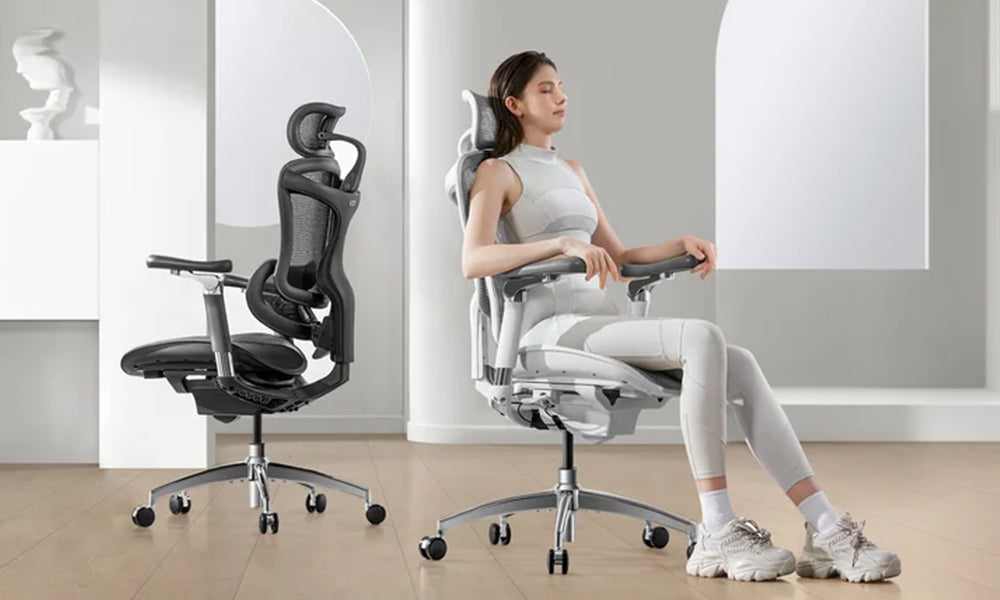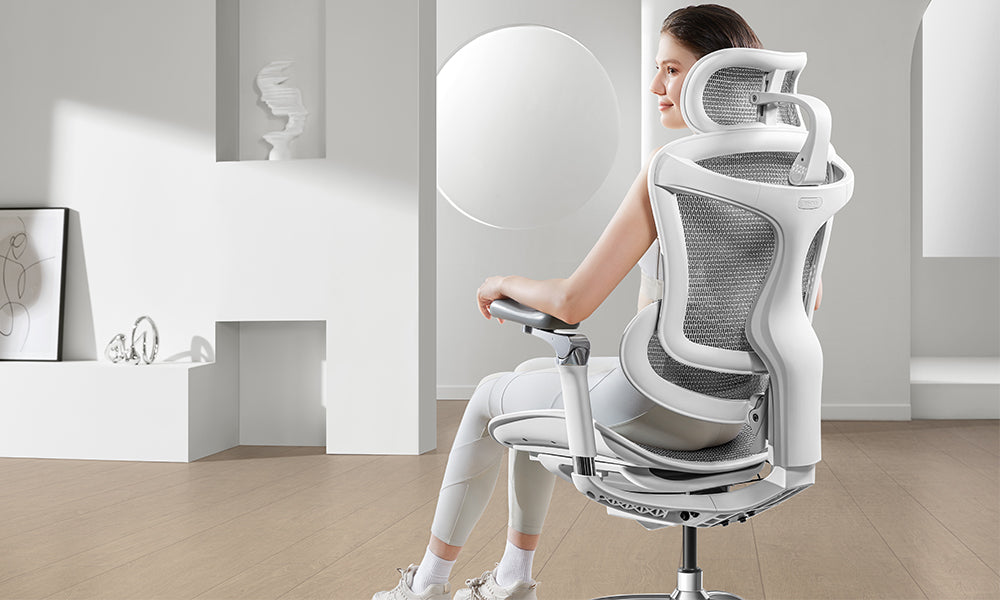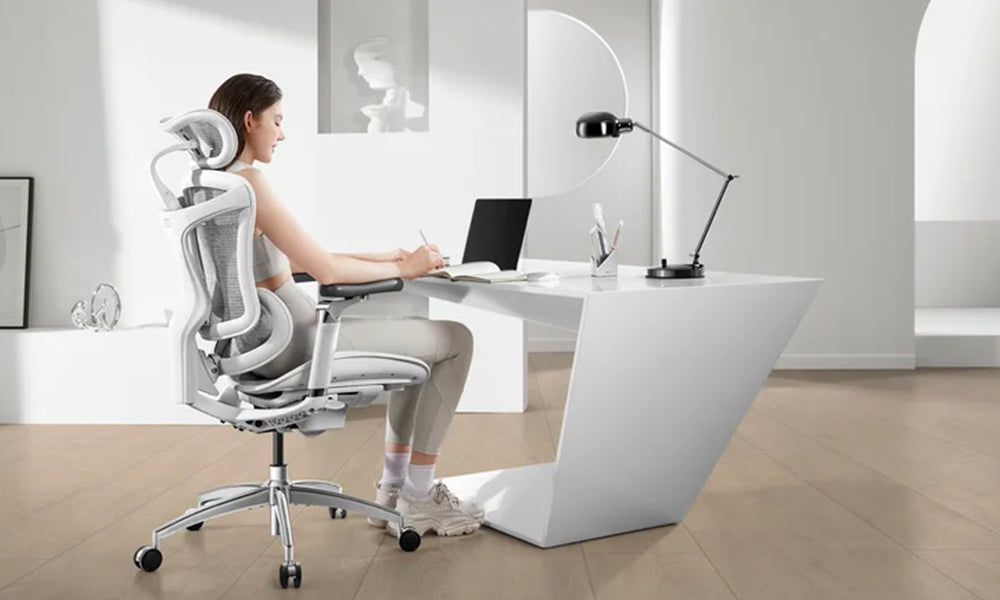As more people are working from home and spending time in front of computer screens, the need for an ergonomic office chair has never been greater. But can an office chair truly make a difference in your posture? Let's explore how the right chair can help and whether it's the solution to posture problems.
The Importance of Posture
Posture plays a significant role in overall health, especially when you spend hours sitting at a desk. Poor posture can lead to a range of issues, from back and neck pain to headaches, fatigue, and even problems with breathing and digestion. According to health experts, maintaining proper posture helps to keep your spine in its natural alignment, preventing strain on muscles and ligaments.
Good posture means keeping your spine in its optimal position — with the natural curves of the neck, upper back, and lower back supported. When sitting, your body should form a 90-degree angle at your hips and knees, and your feet should rest flat on the ground. This alignment reduces the pressure on your spine and promotes comfort.
Can an Office Chair Improve Posture?
The short answer is yes — but only if the chair is designed to promote good posture. An ergonomic office chair provides the necessary support for your body to maintain proper alignment while sitting. While no chair will automatically correct your posture, it can help you stay in a more neutral position throughout the day and remind you to adjust when needed.
Here are several ways an office chair can positively impact your posture:
1. Lumbar Support
One of the most important features for promoting good posture is lumbar support. The lumbar region of your spine is the lower back, and it naturally curves inward. Sitting for long periods without proper support can cause this curve to flatten or exaggerate, leading to discomfort and even pain. An ergonomic office chair with adjustable lumbar support helps maintain the curve in your lower back, reducing pressure and encouraging a neutral spine position.
Many modern office chairs, like the Sihoo Doro S300, offer dynamic lumbar support systems that adapt to your body’s movements, ensuring continuous support for your lower back. This flexibility can significantly improve your posture over time by helping you sit upright and preventing slouching.
2. Adjustable Seat Depth
A chair that allows you to adjust the seat depth is crucial for achieving good posture. The seat should be positioned so that there’s a small gap between the edge of the seat and the back of your knees. If the seat is too deep, it can cause you to lean forward, which leads to slouching. If it’s too shallow, it might not support your thighs properly.
For example, the Sihoo Doro S100 chair offers an adjustable seat depth, ensuring that you can customize the seating position for optimal comfort and posture. This simple adjustment can make a significant difference in how your spine is aligned.
3. Armrest Position
Properly positioned armrests are also vital for good posture. If your armrests are too high or too low, it can cause strain on your shoulders and neck, leading to poor posture. Ideally, your arms should rest comfortably on the armrests, with your elbows at a 90-degree angle, and your shoulders relaxed.
Many ergonomic chairs, such as the Sihoo Doro C300, come with 4D adjustable armrests, which can be moved up, down, forward, backward, and side to side to accommodate your specific needs. This customization helps reduce strain on the upper body and supports better posture.
4. Seat Height and Foot Position
The height of your seat plays a crucial role in posture. If your chair is too high or too low, it can affect your leg position, causing you to slouch or twist to compensate. When seated, your feet should rest flat on the floor with your thighs parallel to the ground. If you find that your feet don’t touch the floor, consider using a footrest to support your feet properly.
Many ergonomic chairs, including models like the Sihoo Doro C300 Pro, have height adjustments to ensure that your body is positioned optimally for both comfort and posture.
5. Backrest and Recline Mechanism
The backrest of an office chair should support the natural curvature of your spine. A chair with a reclining mechanism can help maintain good posture by allowing you to adjust the angle of the backrest, helping you avoid slouching forward. A slight recline, ideally between 90 to 110 degrees, can reduce the pressure on your lower back and encourage a more relaxed yet supportive posture.
Chairs like the Sihoo Doro S300 offer a weightless recline experience, providing full-body support and allowing you to adjust your position throughout the day to keep your spine in the best possible alignment.
How to Use Your Office Chair to Improve Posture
While having an ergonomic office chair is a great start, it’s essential to use it properly for the best results. Here are some tips for getting the most out of your chair:
- Sit Back in the Chair: Always make sure your back is fully supported by the backrest. Avoid sitting on the edge of the chair, as this can cause you to hunch forward.
- Keep Your Feet Flat: Ensure your feet are flat on the floor, with your knees at a 90-degree angle. If necessary, use a footrest to support your feet.
- Adjust Regularly: Don’t stay in one position for too long. Adjust your chair, stand, or walk around every 30 to 60 minutes to keep your muscles engaged and avoid stiffness.
Other Tips for Improving Posture
While an ergonomic chair can make a significant impact on your posture, there are other strategies you can use to improve your posture throughout the day:
- Practice Good Sitting Habits: Be mindful of your posture when sitting at your desk. Avoid slouching or leaning forward, and make sure your shoulders are relaxed.
- Strengthen Your Core: A strong core is essential for maintaining good posture. Regularly engaging in core-strengthening exercises can help you stay upright and reduce strain on your back.
- Take Breaks and Move: Prolonged sitting can strain your back and neck muscles, even if you have an ergonomic chair. Make a habit of standing, stretching, and walking around throughout the day to keep your body in motion.
Conclusion
An office chair can definitely improve your posture, but only if it’s designed with ergonomics in mind. Features like lumbar support, adjustable seat depth, and customizable armrests can make a big difference in supporting your spine and helping you maintain a neutral sitting position. However, to achieve optimal posture, it’s essential to pair your chair with good habits, such as proper sitting posture and regular movement.
If you’re experiencing back pain or discomfort from poor posture, investing in a high-quality ergonomic chair like the Sihoo Doro series can be a game-changer. Whether you're working, gaming, or just relaxing, the right chair can help you stay comfortable and support your health in the long run.



